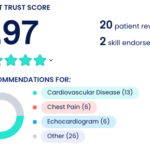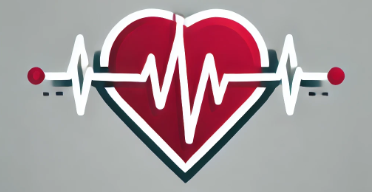Dr. Chabok
Areas of expertise:
Heart attack
Dr. Chabok offers heart attack diagnosis, prevention, treatment, recovery, and emergency care.
Coronary heart disease
We specialize in diagnosis, prevention, treatment, and management of coronary heart disease to protect heart health.
Palpitations and arrythmias
Irregular heartbeat, causes, diagnosis, treatment, prevention.

Management of High blood pressure
Diagnosis, treatment, monitoring, education, support, prevention.
Echocardiogram
Non-invasive heart ultrasound to assess function, structure, and blood flow. Quick, safe, and expert-reviewed for accurate diagnosis.
Angioplasty and Stents
Minimally invasive procedure to open blocked arteries and place stents for better blood flow and heart health
Private Clinics
Premier Private Cardiac Care & Expert Diagnosis & Treatment
- Royal Brompton & Harefield Hospitals Specialist Care, Outpatients & Diagnostics Centre
- The Clementine Churchill Hospital (part of Circle Health Group)
- The Harley Street Clinic, part of HCA Healthcare
- Royal Brompton and Harefield Hospital
- Syon Clinic (part of Circle Health Group)
- Bishops Wood Hospital
Royal Brompton & Harefield Hospitals Specialist Care, Outpatients & Diagnostics Centre

77 Wimpole Street, London, W1G 9RU
The Clementine Churchill Hospital (part of Circle Health Group)

Sudbury Hill, Harrow, London, United Kingdom, HA1 3RX
The Harley Street Clinic, part of HCA Healthcare

35 Weymouth Street, London, United Kingdom, W1G 8BJ
16 Devonshire Street, London W1G 7AF
Royal Brompton and Harefield Hospital

Hill End Road, Harefield, Uxbridge, United Kingdom, UB9 6JH
Syon Clinic (part of Circle Health Group)

941 Great West Road, Brentford, Middlesex, United Kingdom, TW8 9DU
Bishops Wood Hospital

Rickmansworth Road, Northwood, London, United Kingdom, HA6 2JW
Make An Appointment
Have any Question?
c.devine@rbht.nhs.uk
Have care Requirement?
Call (+44) 01895 828948
Working Process
How We Work?
Dr. Chabok and his team are dedicated to providing the best healthcare services with expertise and compassion. Our cardiology services stand out for delivering top-quality heart treatments
Appointment
Book the appointment by Email : c.devine@rbht.nhs.uk or call (+44) 01895 828948

Doctor Checkup
Expert advice, diagnosis

Manage Treatment
Heart care, diagnosis, treatment, monitoring.

Clinical Monitoring
Tracking, observation, analysis, assessment, evaluation.
Trusted by Experts, Proven by Results
Dr. Chabok

Verified patient, Doctify.com
correct my coronary heart disease
Dr Chabok provides a full explanation of his procedures in a straightforward and comprehensible manner. He is very approachable and successfully carried out a number of complex operations to correct my coronary heart disease.

Verified patient, Doctify.com
Cardiovascular Disease
Dr Chabok is providing kind and careful care. I am impressed by the way that he and his secretary, Clare, respond without delay to queries and any request for advice.
10 Dec 2024

Verified patient, Doctify.com
Cardiovascular Disease
Dr Chabok was happy to receive my questions and answer them clearly, with patience, and to my satisfaction. He took time with me and I did not feel rushed. He appears to me to have an excellent grasp of his specialty and also to be highly clinically competent.
March 01, 2025
Comments
Chest Infection: Symptoms, Causes, and Treatment
Chest Infection: Symptoms, Causes, and Treatment What is Chest Infection?…
February 25, 2025
Comments
Fluid and Electrolyte Disorders: Symptoms, Causes, and Treatment
Fluid and Electrolyte Disorders: Symptoms, Causes, and Treatment What is…
February 20, 2025
Comments
High Blood Pressure: Symptoms, Causes, and Treatment
High Blood Pressure: Symptoms, Causes, and Treatment What is High…

